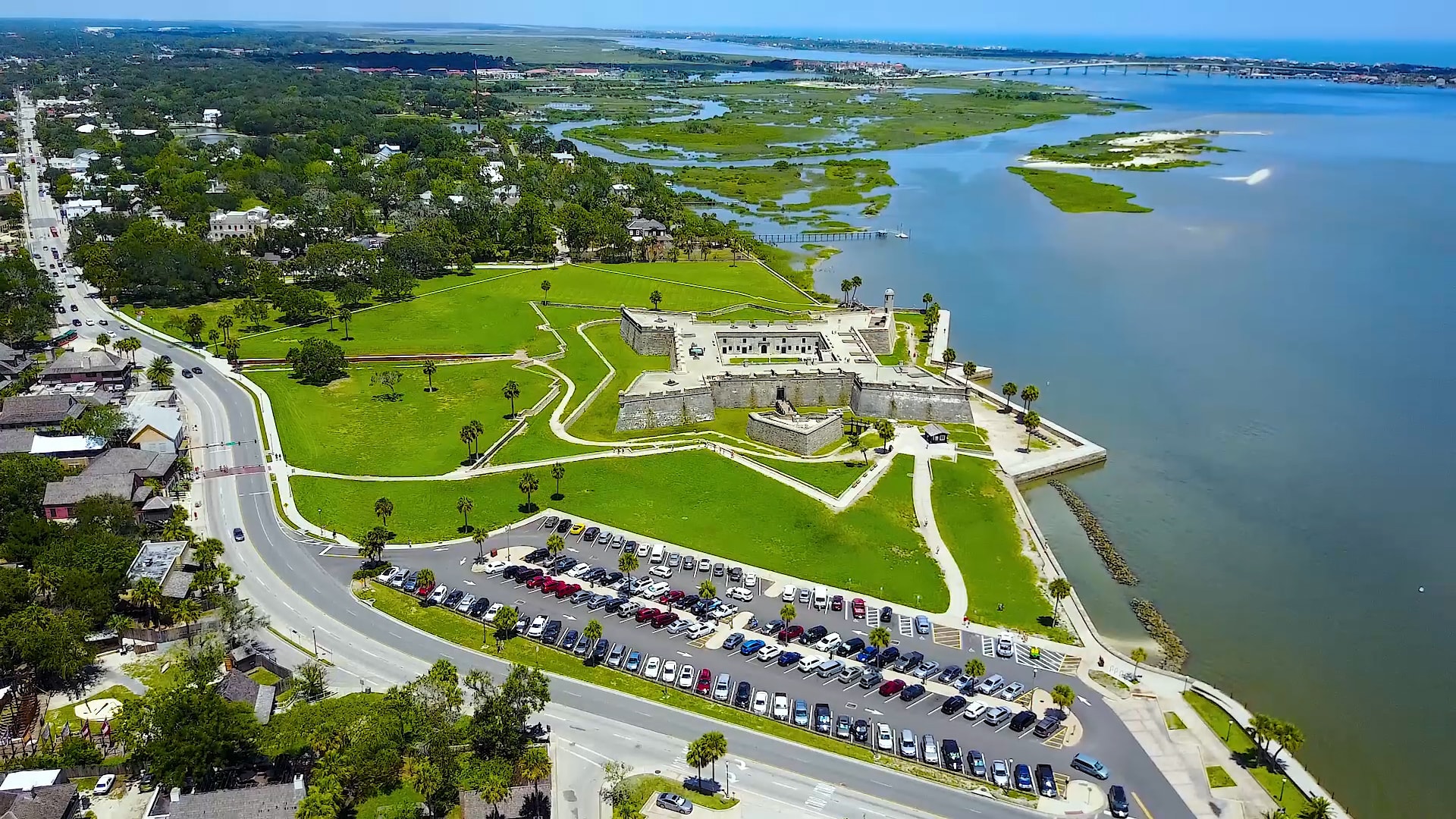While perusing the streets of St. Augustine, you’ll probably notice several historic buildings and sites scattered throughout the city. Some of the city’s oldest artifacts date all the way back to the mid-1500s when Pedro Menendez de Aviles first founded St. Augustine.
History
Pedro Menendez de Aviles was an experienced Spanish admiral who was named Governor of Florida. King Phillip II of Spain tasked him with exploring the region’s Atlantic coast and establishing a permanent colony.
Menendez was racing to reach Florida before French captain, Jean Ribault, who was on his way to secure Fort Caroline, located in what is now Jacksonville. The two fleets ended up having a short skirmish off the coast, but it wasn’t decisive. Menendez then arrived off the Florida coast on August 28, 1565, which was the Feast Day of Saint Augustine of Hippo.
Eleven days after his arrival, on September 8, 1565, Menendez and his 600 settlers and soldiers went ashore near Seloy, a Timucua village. He and his men worked quickly to construct fortifications to protect the people and supplies as they were being unloaded from the ships. They built their settlement in Seloy due to its ideal location for proximity to a fresh water source and its defensibility. He named the settlement San Agustín (St. Augustine).
On this same day, Father Francisco López de Mendoza Grajales, the chaplain of the Spanish expedition, celebrated the first Thanksgiving Mass on the site. Menendez wanted to dedicate the site to God, and the Mission Nombre de Dios was established with the goal of bringing the Christian faith to the Native people of the land.
All the while, Jean Ribault has arrived at Fort Caroline with more settlers, soldiers, and weapons. He became governor of the settlement and sent many of the soldiers aboard ships to attack St. Augustine. However, a violent storm wrecked his ships further down the coast. This gave Menendez the chance to march his forces overland for a surprise attack on Fort Caroline. With the destruction of the French garrison and fleet, the coast of Florida was now in Spanish hands.
Menendez then set forth to explore the land, build the town, and establish missions to the Indians on behalf of the Church. St. Augustine was founded 21 years before the Roanoke Island settlement and 42 years before the successful settlements of Jamestown and Santa Fe. In fact, it is the oldest continuously occupied settlement in the continental U.S. of European origin. And, this is just the beginning of St. Augustine’s story.
Museums and Historic Sites to Visit
You can see from the architecture, historic sites, and the people who call St. Augustine home, that the city has had various cultural influences over its history. Here are a few of the great historic sites and museums you can visit to learn more about the history of this old city.
If you want to learn more about the founding of St. Augustine, this is the perfect place for you. This museum also centers on the beginning of teaching Christianity in the New World and the missionary efforts made from 1565, when St. Augustine was founded, to the present day. There are many exhibits and artifacts to explore here. You will also find the original casket in which Menendez was buried in 1574 (his mortal remains were transferred elsewhere in 1924).
Fountain of Youth Archaeological Park
When Pedro Menendez de Aviles founded the city of St. Augustine at Seloy, it was located in the area that is now the Fountain of Youth Archaeological Park. The settlement remained at this site until Menendez was forced to move across the river due to growing tensions and hostilities between the Spaniards and the Timucua.
There are so many things to explore here, including the Menendez Statue/Park, a Spanish lookout, excavation sites, the 1565 Menendez settlement, a reconstruction of Mission Nombre de Dios, a Timucuan village, and so much more!
Castillo de San Marcos is known for being the oldest masonry fort in the continental U.S. It can be found on the western shore of Matanzas Bay. At over 315 years old, the fort was constructed to protect Spain’s claims in the New World.
Normally, there are plenty of things to do at the fort, including exploring the rooms and interior courtyard, cannon firing demonstrations, weaponry demonstrations, reenactments, and ranger-led tours. Unfortunately, due to the COVID-19 outbreak, the park is currently closed.
However, you can still see the magnificent fort from afar, and you can keep updated on the park’s re-opening status on their website. They also offer virtual tours and videos in their app. So, maybe while you’re enjoying some lunch in one of many of St. Augustine’s great restaurants, you can dive into the fort’s history by taking a virtual tour on your phone!
Not far from the Castillo de San Marcos, you’ll find the Colonial Quarter, which offers visitors a journey into the past. This little section of St. Augustine has several restaurants that offer fantastic views of St. George Street while dining in a historic atmosphere. There are also several unique shops, exhibits, and encounters to see here.
Aviles Street is not only the heart of St. Augustine’s Art District; it’s the oldest street in the nation! You can find some of the earliest historical sites in St. Augustine along this street, along with museums, shops, local galleries, restaurants, and more.
From the Founding of St. Augustine and Spanish rule, to British rule, and American rule, the city has passed through many hands, making it the wonderfully unique and intriguing city it is today. We invite you to visit St. Augustine and learn about the history, cultures, and legends that make it one of the top travel destinations in the world.


